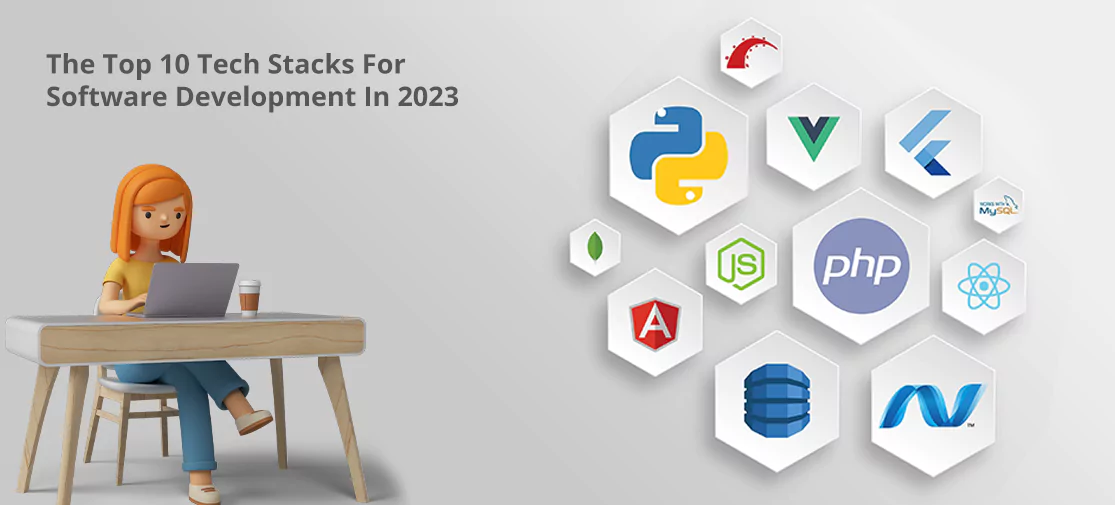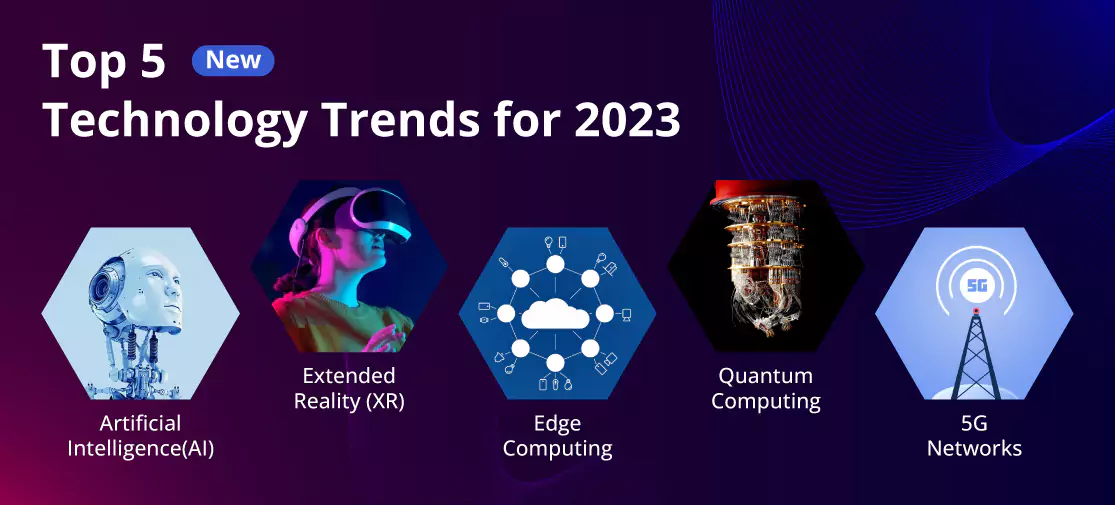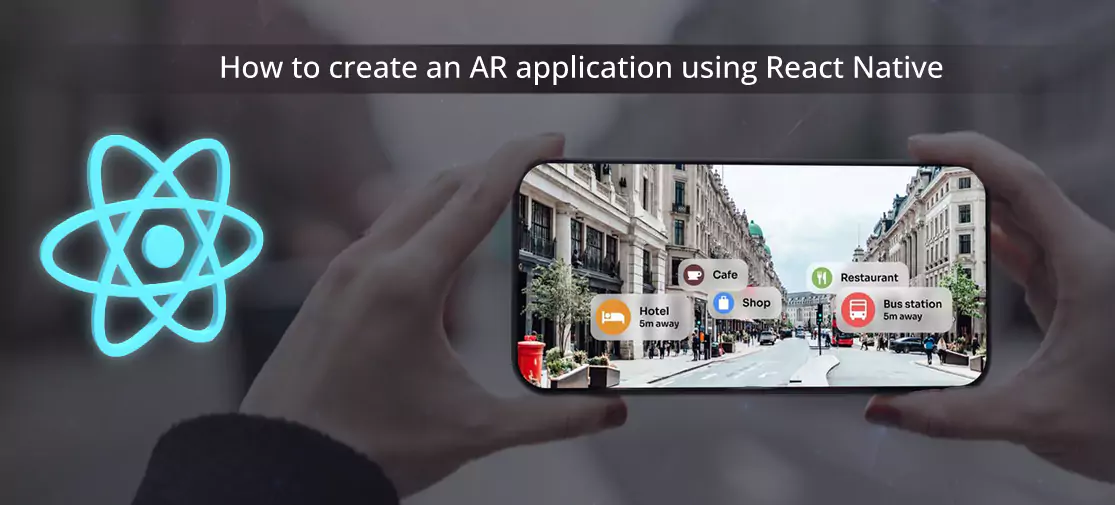Introduction
One of the most important components of software development is picking the appropriate technology stack. Making a sensible choice is crucial because it can have a big impact on your project's success. Several technological stacks are very effective, scalable, and performant in 2023.
In this blog, we'll take a deep look at some of the top tech stacks for creating software. We'll go through the fundamentals of technology stacks, the various kinds of tech stacks, and why picking the appropriate stack is so important. We'll also give a thorough rundown of some of the most popular software development stacks for 2023, as well as advice on how to pick the ideal stack for your project.
What is a technology stack?
Let's first talk about what a technological stack is before we go into the many kinds of stacks that are accessible. A tech stack, also known by the term software stack, is a group of programming languages, libraries, frameworks, and software tools that are used to create software applications.
A frontend stack and a backend stack are the two main parts of a technology stack.
Frontend stack
The technology and techniques used to create a software application's user interface make up the frontend stack. This includes front-end frameworks like React, Angular, and Vue.js, as well as HTML, CSS, and JavaScript.
Backend stack
On the other hand, the server-side development of a software application is done using the tools and technologies that make up the backend stack. Along with backend frameworks like Laravel, Django, and Ruby on Rails, it covers programming languages like PHP, Python, Ruby, and Java.
How can a software stack impact your application development?
The software stack you choose can have a big impact on how your application is developed. A software stack consists of every technology and set of tools needed to create an application, from the operating system and programming language to the database and web server. The tech stack selected can have an impact on a variety of application development process elements, including speed of development, quality of the finished product, and scalability.
Utilizing a software stack with ease is one of the most effective ways to influence the development of your applications. An easier-to-learn and utilize tech stack will help you get started and create results faster if you are new to programming. To create the kind of application you envisage, though, you might need a more sophisticated stack with advanced capabilities if you're an experienced developer.
Application development may be impacted by speed and performance. Some stacks can help with the development of your application because they are speed-optimized. Others are scalable, enabling your application to handle a large volume of users and data without stuttering. The stack you select will depend on the precise requirements of your project.
The software combination you select: It might also affect how well your finished work turns out. Some stacks feature better testing and debugging tools, which facilitate finding and fixing mistakes. Some have stronger security features that guard against hacking and data leaks. By selecting a tech stack with effective quality control tools, you can identify and address problems as they arise early in the development process, ultimately saving time and money.
Technical debt: It's crucial to take technical debt into account when selecting a software stack because it can have long-term effects. Technical debt is the expense and inefficiency brought on by development trade-offs or hasty decisions, such as the usage of antiquated or incompatible technologies. For instance, a straightforward stack that is easy to use and construct in the short term may require more upkeep and changes in the long run, increasing expenses and delaying progress. As an alternative, a more challenging-to-implement stack might eventually offer more scalability and flexibility, lowering technical debt and assuring a more seamless development process.
The best software development stacks
Knowing how important it is to choose the right technology stack, let's look at some of the top technology stacks for software development.
Ten software development stacks that excel in efficiency, scalability, and performance are listed below:
1. LAMP stack
A well-liked tech stack for software development is LAMP. There are four key parts to it: Linux, Apache, MySQL, and PHP.
An open-source operating system called Linux offers a reliable and secure environment for the creation of software. Numerous programming languages are supported by the widely used Apache web server, which is renowned for its adaptability and scalability. The database management system MySQL is reliable and strong, enabling fast and effective data retrieval. PHP is a scripting language that runs on servers and is frequently used for creating websites.
The LAMP stack is renowned for its ease of use, versatility, and affordability. LAMP enables programmers to build dynamic, interactive web applications that are easy to grow and manage. For web developers who are just starting out or working on small to medium-sized projects, it is a great option.
However, for large-scale projects requiring high scalability and performance, there might be better alternatives. If you need specialized knowledge for a challenging job, there might be better solutions available.
Overall, its simplicity, adaptability, and cost make it a well-liked option among developers worldwide.
2. ASP.NET stack
Building dynamic and reliable online apps is a common software development task that makes use of the ASP.NET technology stack. It is a framework for server-side web applications made for the Microsoft.NET platform.
Three of ASP.NET's most important features are scalability, performance, and security. It offers a full range of tools and frameworks that let programmers create complex web applications fast and effectively. C# and Visual Basic are only two of the numerous programming languages that the framework is made to handle. It connects smoothly with other Microsoft products including Azure, SQL Server, and Visual Studio.
Compared to alternative technology stacks, ASP.NET has a number of benefits. It performs better than older web technologies like PHP and LAMP, for instance. Additionally, it is more scalable and capable of handling heavy traffic without sacrificing performance. A recommended option for applications demanding high-security standards, ASP.NET also provides sophisticated security capabilities.
But in order to utilize ASP.NET properly, one must have particular knowledge and experience. Additionally, compared to other web development frameworks, its learning curve is greater. It is a Microsoft technology, therefore developers that favor open-source platforms might not find it to be the greatest option.
3. MEAN stack
Another well-liked technological stack for software development is the MEAN stack. It is a free and open-source technology stack using MongoDB, Express.js, AngularJS, and Node.js as its constituent parts. Because of its adaptability and flexibility, this stack is a great option for creating dynamic and real-time applications.
A NoSQL database called MongoDB stores data as documents and is very scalable and user-friendly. Node.js is a JavaScript server-side runtime created to create scalable and fast applications. Express.js is a robust and portable framework for Node.js web applications. A client-side JavaScript framework called AngularJS makes it easier to create single-page applications.
The MEAN stack's ability to use JavaScript on both the client and server sides minimises the need for developers to transition between various programming languages. This is one of its main advantages. This facilitates the development, testing, deployment, maintenance, and scaling of applications.
For creating real-time online applications like chat, gaming, and collaborative tools, MEAN stack is a fantastic option. It is also excellent for creating mobile apps and single-page websites with Ionic and NativeScript.
4. MERN stack
Imaginary Cloud logo Learn more about what is MERN stack and how it works here
The MERN stack is a well-known and powerful software development stack for creating dynamic web applications. It uses MongoDB, Express.js, React, and Node.js as its four core technologies. Each technology makes a substantial contribution to the creation of a reliable and scalable application.
MongoDB is a scalable, flexible NoSQL database that focuses on document-oriented data storage and retrieval. Its JSON-like data storage makes it simple to use and combine with other technologies.
Express.js is a Node.js web application framework that is used to build server-side web applications. It is compact and adaptable. It offers a straightforward and user-friendly API for setting up HTTP servers and managing requests and responses.
Popular frontend library React is used to build dynamic user interfaces. It provides complete tools for managing state, handling events, and building reusable components. React uses a virtual DOM that enables quick and easy.
A server-side JavaScript runtime called Node.js is used to create scalable and quick apps. It can efficiently handle high volume requests thanks to its event-driven, non-blocking I/O approach.
Due to the integration of these four technologies, MERN stack is a fantastic option for creating cutting-edge and dynamic web apps. Applications built on the MERN stack are incredibly scalable, fast, and simple to maintain. Its growth and development are also supported by a sizable and vibrant community of users and developers, making the stack a trustworthy and trusted option for web development.
5. MEVN stack
MongoDB, Express.js, Vue.js, and Node.js are the four potent technologies that make up the well-known MEVN stack. Strong and scalable web applications, especially those demanding real-time data streaming and dynamic user interfaces, are built with MEVN.
MongoDB is a NoSQL database that stores data in a document-based format. It is highly scalable and provides flexible data modelling options. Express.js is a minimalistic and flexible web application framework enabling developers to build robust APIs quickly. Vue.js is a progressive JavaScript framework for creating complex user interfaces. Finally, Node.js is a JavaScript runtime environment that allows developers to write server-side code in JavaScript.
One of the MEVN stack's biggest benefits is that it enables programmers to create web apps using just JavaScript. As a result, developers can save time and money by not having to move between multiple programming languages as they create new application components. It is also simple to add new features and functionalities to the application because the MEVN stack is very modular.
Additional advantages of the MEVN stack are its scalability and ease of implementation. The MEVN stack enables rapid deployment of applications on cloud infrastructures like AWS, Google Cloud, and Microsoft Azure. These cloud computing platforms' scalable architecture can accommodate millions of users without slowing down.
There are certain challenges with the MEVN stack, though. One of the main problems is that it is relatively new compared to other stacks like LAMP and Ruby on Rails, therefore there aren't as many web resources and documentation available. Additionally, the MEVN stack should not be used to create complex, large-scale enterprise applications.
6. Ruby on Rails stack
The well-known open-source Ruby on Rails (RoR) web application framework makes use of the Ruby programming language. The "convention over configuration" philosophy of RoR has grown in popularity over time because it enables developers to concentrate more on the application logic than the configuration specifics.
The RoR stack includes the following components:
A dynamic, object-oriented programming language called RubyModel-View-Controller (MVC) is a web application framework that is used by Rails.Relational database management systems supported by RoR by default include SQLite or PostgreSQL. JavaScript, HTML, and CSS. For the creation of user interfaces and web pages, RoR supports various web development technologies.RoR has a number of advantages for software development. The first is that it has a sizable and vibrant community that offers a plethora of documentation, guides, and plugins. Due to the modularity of RoR, developers may easily add or remove components as needed, facilitating better maintenance and scalability.
Additionally, the convention over configuration approach of RoR minimises the amount of time developers spend on tedious configuration activities, accelerating development and decreasing the risk of errors. Additionally, this method makes RoR applications simpler to comprehend and more consistent, which is advantageous for collaboration and code maintenance.
7. Python stack
Python is a high-level, all-purpose programming language that is frequently used in the creation of applications. Python is frequently used for machine learning, AI, data analysis, and scientific computing. It is renowned for its simple syntax, usability, and versatility, making it a great option for both inexperienced and seasoned developers.
Python is an interpreted language, therefore in order to run any code written in it, no compilation is required. It is a quick language to create with since code may be changed and executed quickly. Python also has a sizable library of pre-written code, which helps developers do tasks more rapidly. Two of the most well-liked Python web frameworks are Django and Flask.
One of Python's most important advantages is the focus on readability and simplicity. The language aims to be easy to understand and write, with a syntax that reduces the amount of code needed to finish a task. Python is a great option for new programmers as a result.
The stack of Python makes it possible to utilize it with a variety of technologies, including frontend and backend ones. Python is compatible with well-known backend technologies like Django and Flask as well as frontend technologies like React and Vue. Python is a great choice for developers building intricate, feature-rich apps because of its versatility.
8. Java stack
Logo for Imaginary Cloud Discover more about the variations between Python and Java.
Another extensively used enterprise-level programming language that has been around for a while is Java. It features a sizable developer community and a wealth of frameworks, libraries, and tools that make development easier.
The Java programming language, the Spring framework, and a database system make up the three parts of the Java stack. Java is an object-oriented programming language that is platform neutral, thus the code can run on any computer regardless of the operating system. A well-liked Java framework called Spring makes it possible to create enterprise applications in a lightweight and modular way. It has modules for testing, data access, security, and web development. Additionally, a number of database systems, including MySQL, PostgreSQL, and Oracle, are available to Java developers.
Java is a good choice for building complex systems with high performance and scalability requirements. Java is a popular option for applications involving sensitive data because it offers strong security measures.
For new developers, however, it could have a steep learning curve. Additionally, it requires more resources than other stacks, which increases the overall length and expense of development.
9. Serverless stack
Serverless architecture, which does away with the need for developers to worry about infrastructure and server maintenance, is the newest trend in software development. The developer is able to focus only on the application code thanks to this design rather than the infrastructure that underpins it.
A breakthrough strategy called a serverless stack makes it possible to create scalable and affordable apps without using dedicated servers. By using cloud computing tools like AWS Lambda, Google Cloud Functions, and Azure Functions, you may achieve this.
The serverless architecture is based on the Functions as a Service (FaaS) concept, which divides the application into small, discrete functions you can execute on demand. Specific events, such as user requests, trigger these functions, which then run and return a response. Because the functions are only performed when required, you do not have to pay for unused server resources, making the serverless stack very cost-effective.
Aside from cost savings, the serverless stack offers excellent scalability. The cloud provider automatically scales the application up or down based on the number of requests. This means you won't have to deal with traffic spikes or manage server resources during peak times.
One of the most significant advantages of the serverless architecture is its flexibility. Because the cloud provider maintains the infrastructure, you can respond swiftly to changes in consumer wants or organisational requirements without having to worry about the underlying infrastructure.
10. Flutter / Web
Google's Flutter is an open-source framework for creating mobile applications. It has recently advanced though, and you can now use it for web building. Due to its distinctive features and advantages, the new web development trend known as Flutter for Web has grown in popularity.
Using Flutter for Web, programmers can build web applications that are responsive, aesthetically pleasing, and function well on several platforms. Because it uses the same codebase as the mobile app, development can proceed more quickly and effectively. Additionally, Flutter for Web features an easy-to-use, contemporary user experience.
Using Flutter for Web gives developers the ability to make web applications that mimic the look and feel of native mobile apps, which is one of its main benefits. The usage of pre-built widgets by developers is made possible by Flutter for the Web, which streamlines and expedites the creation of web applications. Additionally, it features hot-reload capabilities that let engineers view changes to the code as they happen.
A great option for building intricate, dynamic online applications is Flutter for online. It comes with a selection of potent and versatile tools for designing UI layouts and animations that can be adjusted to meet the demands of a particular project. A flexible choice for creating web applications that need data from many sources, Flutter for Web also enables developers to interface with third-party APIs and services.
Tips for choosing your tech stack
It can be difficult to select the best tech stack for your software development project. Before making a final decision, there are a number of things to think about.
When selecting your technological stack, you should keep the following in mind:
- Clearly define project size, complexity, and functionality before choosing a technology stack. Your project's size, complexity, and functionality should all be defined. Make sure the stack you select satisfies the specifications of your project. A lightweight stack is appropriate for short, simple projects, whereas a more involved project can call for a more thorough, sturdy stack.
- Scalability requirements: When choosing a technological stack, scalability is crucial. You must select a tech stack that can scale with your project's growth if it has the capacity to grow. Choose a stack that can manage massive datasets and high traffic volumes.
- Technology and team expertise: It's critical to select a technology stack that your team is comfortable using. Selecting a software stack that incorporates a technology that your staff is knowledgeable with is a good idea. You will not need to spend as much time or money on retraining your staff on the new technology.
- Time to market: Software development must include time to market. You must select a tech stack that enables you to create and deliver your project swiftly if you need to launch it quickly. Make sure the stack you select enables you to easily build and run your project.
- Security requirements: When developing software, security is a top priority. To protect your application and the information of its users, you must select a tech stack with strong security capabilities. Choose a stack that adheres to the finest security procedures and has a solid track record of security.
- Maintenance: Software creation must include maintenance. You must pick a technological stack that is simple to maintain and has a huge developer community that can assist you with any problems. Make sure the stack you select has solid documentation and is reliable.
- Development costs: Choosing a technology stack requires careful consideration of the development costs. Make sure the stack you select delivers good value for the money and suits your budget. When selecting your stack, keep the cost of licences, hosting, and maintenance in mind.
What should be your next step?
You should be able to identify which technology stack suits your project the best after taking into account all the above listed aspects. The development process will be your next step, however first you need perform the following:
- Planning the development process is the first step after selecting the technology stack. Establish timetables and milestones for the project, and then assign resources in accordance with them.
- Create the team: You might need to bring on more developers or technical specialists, depending on the scope and complexity of your project. Build a team that has the knowledge and expertise required to complete the project.
- Create the development environment: Create the development environment by adding the required tools, software, and libraries. Make sure the environment is set up properly and that everyone on the team can access it.
- Create the MVP: Create the Minimum Viable Product. This will enable you to collect customer feedback and validate the concept. You can add more features and functionalities once you have a functioning MVP.
- Test and deploy: Make sure the application is fully functional and free of bugs by extensively testing it. Deploy the application to the production environment as soon as you are happy with the results.
Conclusion
Your software development project's success depends on selecting the appropriate tech stack. Project size, complexity, scalability, team skills, time to market, security requirements, maintenance costs, and development costs are just a few of the variables to take into account. The world of software development is fast evolving in 2023, and new technologies are constantly being developed. It's crucial for software developers to keep up with the newest trends and technologies and select the right stack for each project.
But keep in mind that picking the ideal stack is only the first step; the actual difficulty lies in creating a high-quality application that satisfies your users' demands. Take your time, do your research, and select the stack that best fits the objectives and specifications of your project. You can create original software that addresses real-world issues and delights your users if you have the correct technological stack and development team. Learn more about how Imaginary Cloud creates user-centered websites, online applications, and mobile applications here.
However, it's crucial to remember that not all apps can utilize the serverless infrastructure. For instance, if your application necessitates time-consuming procedures, you might need to consider other solutions. Furthermore, due to the serverless stack's dependency on cloud computing services, latency issues may arise if your application requires high responsiveness.




